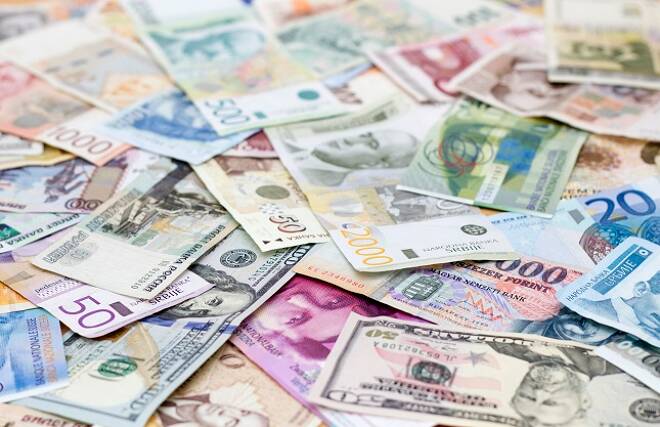Advertisement
Advertisement
Dollar Firms Against Basket, Loses Ground to Yen on Policy Change Concerns
By:
The U.S. Dollar finished nearly flat against a basket of currencies last week, losing ground to the Japanese Yen, but firming versus the Euro, Australian and New Zealand Dollars. Domestic economic data, a potential shift in Bank of Japan Policy and the possible settling of the trade dispute with the European Union were the catalysts behind the price action.
The U.S. Dollar finished nearly flat against a basket of currencies last week, losing ground to the Japanese Yen, but firming versus the Euro, Australian and New Zealand Dollars.
For the week, the September U.S. Dollar Index settled at 94.460, up 23.4 or +.25%.
Domestic economic data, a potential shift in Bank of Japan Policy and the possible settling of the trade dispute with the European Union were the catalysts behind the price action.
On the economic front, Flash Manufacturing PMI came in better than expected along with the Richmond Manufacturing Index. Housing continued to disappoint with Existing Home Sales falling to 5.38 million units versus a 5.46 million unit forecast. New Home Sales also missed the mark with 631K units versus a 669K estimate.
The major reports included Durable Goods and Advance GDP. New orders for key U.S.-made capital goods increased more than expected in June and shipments surged, pointing to solid growth in business spending on equipment in the second quarter. Second-quarter GDP was the best in nearly 4 years, at 4.1 percent. The dollar weakened on Friday after the release of the GDP data as investors expressed doubt the growth would continue the rest of the year.
The dollar lost ground against the Japanese Yen early in the week on reports that the Bank of Japan was preparing to make changes to monetary policy. However, the Dollar/Yen was able to stabilize and consolidate the rest of the week as investors began to doubt that the BoJ will change its stimulus program when it meets next week.
The dollar was able to pick up some strength late in the week, mostly in response to a weaker Euro and a trade agreement between the United States and the European Union.
Japanese Yen
The Japanese Yen rose sharply early last week on reports that the Bank of Japan could adjust its monetary policy to make the program more sustainable. According to Reuters, the BoJ was holding preliminary talks on making changes to its interest-rate targeting and stock-buying techniques. Any such shift would come years after BoJ Governor Haruhiko Kuroda started a massive bond buying initiative in 2013 to help eradicate deflationary pressures and buoy prices.
However, the central bank did try to make it clear that this wasn’t a tightening policy although the reaction in the markets suggested it was moving away from its easy money policy.
Euro
The Euro tumbled last week, while posting its worst one day performance in a month, as the European Central Bank clung to its easy money policy and signaled no change in its timetable to move away from ultra-low rates or end its bond purchase program.
Additionally, ECB President Mario Draghi said at a press conference following the ECB’s policy decision while he was confident regional inflation would reach the ECB’s 2 percent target, rising tariffs and other trade barriers would hurt the growth of the 19-member economic bloc.
Australian and New Zealand Dollars
The Australian and New Zealand Dollars posted a mostly sideways trade last week before settling lower. The price action was mostly manipulated by volatility in the Treasury markets, appetite for risk, concerns over the U.S.-China trade dispute and a few domestic reports.
In New Zealand, the Trade Balance came in lower than expected at -113 Million versus a 200 Million estimate.
In Australia, the Consumer Price Index posted a solid 0.4% reading, but the figures came in below the 0.5% forecast. Trimmed Mean CPI stayed at 0.5%. Despite the strong readings, the numbers were not likely to alter the dovish monetary policy of the Reserve Bank of Australia. They are not likely to make a change until late 2019 or early 2020 and this is not likely to occur unless rising wages drag up inflation.
About the Author
James Hyerczykauthor
James Hyerczyk is a U.S. based seasoned technical analyst and educator with over 40 years of experience in market analysis and trading, specializing in chart patterns and price movement. He is the author of two books on technical analysis and has a background in both futures and stock markets.
Advertisement
